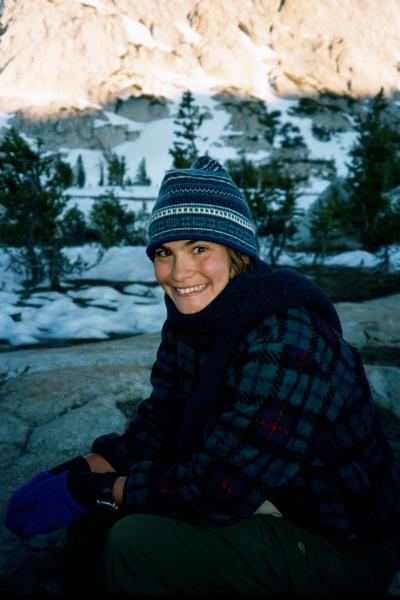 I. Cellular Population Epigenetics
I. Cellular Population Epigenetics How does a single genome produce the many different cellular types that characterize an individual's various tissues?
Diane P.
Genereux
Evolutionary Biology
 I. Cellular Population Epigenetics
I. Cellular Population Epigenetics
How does a single genome produce
the many different cellular types that characterize an
individual's various tissues?
One
partial explanation is that cells identical at the genetic level are distinct at the
epigenetic level: they exhibit
heritable differences in their gene expression profiles. Some
of this epigenetic signal is encoded in
tissue-specific methylation
patterns --- the densities
and distributions of methyl groups bound to the nucleotides in DNA
sequences. Indeed, in many species, these
epigenetic disparities produce measurable
differences in gene expression levels.
But differences in methylation
provide only a proximate explanation for
tissue heterogeneity. How do identical sequence copies become overlayed with
different methylation patterns? And how are those
patterns maintained over repeated rounds
of cell division? Brooks Miner , Charles
Laird , Carl Bergstrom and I are using population-epigenetic modelling
to investigate the processes that enable transmission of epigenetic information. We have developed a model under which we can infer the CpG site-specific rates of maintenance and de novo methylation.
We are now working to develop experimental approaches to understand both the initial establishment of methylation patterns, and the factors that account for differences in site-specific methylation rates.
II. Quantifying Bacterial
Relatedness
Bacteria secrete into their habitats antibiotic resistence
factors, virulence factors, and
enzymes that free nutrients for general
use. While these molecules
benefit the population at large, any
individual bacterium
could increase its own fitness by
exploting others' contributions while
contributing no public goods of its own. How can this be? As is the case with cooperation among multicellular eukaryotes, the persistence of cooperation in bacterial populations derives, at least in part, from the close genetic relatedness of individuals. But the relationship of relatedness to population size depends heavily on whether reproduction is sexual or aseuxal.
Along with Carl Bergstrom , I am developing a model to quantify relatedness in bacterial populations.
Diane P. Genereux and John M. Logsdon,
Jr. 2003. Much Ado about
Bacteria-to-Vertebrate Lateral Gene
Transfer. Trends in
Genetics. 19: 191-195.
.pdf
Diane P. Genereux, Brooks E. Miner, Carl T. Bergstrom, Charles D. Laird,
2005. A population-epigenetic model to infer site-specific methylation rates from double-stranded DNA methylation patterns. in press at Proceedings of the National Academy of the Sciences.
.pdf
Diane P. Genereux and Carl T. Bergstrom,
2005. Evolution in Action: Understanding Antibiotic Resistance. (to be published by National Association of Biology Teachers).
.pdf